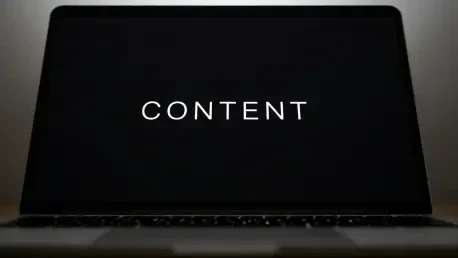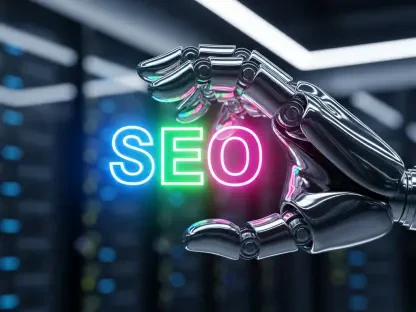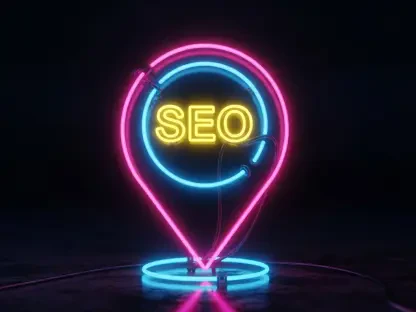In a world where digital platforms dominate cultural consumption, artists find themselves grappling with an unsettling reality: creating art alone is often not enough to sustain a livelihood, and many must adapt to new economic pressures. A staggering statistic from a recent survey by the Authors Guild reveals that full-time authors earn a median income of just $10,000 from book sales, underscoring a harsh economic truth for many in the creative field. This financial strain pushes artists across various disciplines—writers, musicians, and visual creators alike—to morph into content creators, prioritizing marketable output over pure artistic expression. This industry report delves into the evolving landscape of art under capitalism, examining the economic pressures, cultural expectations, and systemic challenges that shape this transformation, while exploring what the future might hold for those who create.
The Evolving Landscape of Art in a Digital Age
The art industry today stands at a crossroads, heavily influenced by the rapid rise of digital platforms that have redefined how creative work reaches audiences. Social media and streaming services have become central to visibility, often dictating an artist’s success more than traditional galleries or publishing houses. This shift has intertwined art with capitalist demands, where marketability frequently overshadows intrinsic value, compelling creators to adapt to trends rather than challenge them.
Particularly for writers, the pressure to conform to market-driven expectations is palpable, as publishers increasingly prioritize commercial appeal over editorial depth. Visual artists and musicians face similar dynamics, with algorithms on platforms like Instagram or Spotify amplifying content that fits popular molds, often sidelining experimental or niche work. Technology, while offering unprecedented access to global audiences, also demands constant self-promotion, turning artists into their own marketing teams.
Key players in this ecosystem include publishers, digital platforms, and the artists themselves, each navigating a landscape shaped by societal trends that normalize self-branding. The expectation to maintain an online presence is no longer optional but a perceived necessity, driven by a culture that equates visibility with value. This digital age, while democratizing in some respects, raises critical questions about the sustainability of artistic careers when the focus shifts from creation to curation of a public persona.
Economic Realities and Market Trends for Artists
Financial Struggles and the Push for Diversified Income
Economic challenges loom large for many artists, with financial instability often dictating career paths. Data from the Authors Guild highlights that full-time authors, as a benchmark, earn a median of $10,000 annually from book sales, with supplementary activities like freelancing or teaching boosting total income to around $20,000—still below a living wage in most regions. This reality forces creators to juggle multiple roles, diluting the time and energy available for their primary craft.
The necessity for diversified income streams has become a norm, with many turning to side gigs such as editing, tutoring, or even unrelated fields to make ends meet. This fragmentation of focus not only hampers artistic development but also perpetuates a cycle where creative output is secondary to financial survival. Consumer behavior, leaning toward easily accessible digital content, further exacerbates this trend, pushing artists to produce work that aligns with quick consumption rather than lasting impact.
Growth Projections and Market Indicators
Looking ahead, digital content creation is poised to dominate as a primary revenue source for artists, with projections suggesting a significant uptick in its role over the next few years. Industry analyses indicate that platforms facilitating direct-to-consumer content, such as Patreon or Substack, are expected to see substantial growth, potentially reshaping how income is generated. However, the correlation between effort and return remains ambiguous, as high social media engagement does not always translate to tangible sales.
Performance metrics often paint a murky picture, with time invested in online presence yielding inconsistent financial outcomes. For instance, while a viral post might boost visibility, its impact on long-term earnings is rarely guaranteed. As the gig economy expands and digital tools evolve, artists’ financial prospects will likely hinge on their ability to navigate these platforms, though the balance between creative integrity and market demands remains a persistent tension.
Challenges of Balancing Art with Content Creation
The struggle to maintain artistic integrity while meeting market demands forms a core dilemma for many creators. Producing content tailored for digital consumption often requires compromising on depth or originality, as platforms reward frequency and accessibility over substance. This shift can erode the essence of what many artists strive to achieve, creating a conflict between personal vision and public expectation.
Technological barriers add another layer of difficulty, as building a robust online presence demands skills and time that many artists lack or cannot spare. Learning to manage social media algorithms or video editing software becomes an additional burden, often with no assured payoff. The investment in these tools and strategies can feel like a gamble, especially for those already stretched thin by economic pressures.
Market-driven forces, coupled with societal norms, further complicate the landscape by devaluing art as labor under capitalist structures. The expectation to self-promote relentlessly often comes at the expense of fair compensation, with exposure framed as a substitute for pay. Potential solutions, such as collective advocacy for better wages or increased publisher support in marketing efforts, could alleviate some of these pressures, though implementing such changes requires systemic reform across industries.
Cultural and Systemic Expectations in the Art World
Cultural norms have increasingly imposed self-marketing as an unspoken requirement for artists, a burden less common in other professions like engineering or healthcare. This expectation to build a personal brand through constant online engagement sets creatives apart, framing their success as dependent on likability or charisma rather than talent alone. Such a paradigm shift redefines the artist’s role, often to the detriment of their core work.
Systemic issues within sectors like publishing exacerbate these challenges, with sales figures frequently taking precedence over editorial quality. This commercial focus can marginalize innovative or unconventional voices, prioritizing safe, marketable content instead. The broader societal tendency to undervalue artistic labor—expecting gratitude for minimal recognition rather than demanding equitable pay—reinforces a cycle of exploitation that many struggle to escape.
These cultural and systemic pressures take a toll on mental health and creative energy, while also limiting diversity in the arts. Artists from less privileged backgrounds often lack the resources to compete in a self-promotion-heavy environment, reducing accessibility and representation. Addressing these disparities necessitates a reevaluation of how society perceives and compensates creative contributions, ensuring that talent, not just marketability, drives opportunity.
The Future of Art in a Content-Driven Economy
As digital content continues to shape economic models, the art industry appears headed toward a future where entrepreneurial skills are as critical as creative ones. The rise of bite-sized, accessible content aligns with shifting consumer preferences, potentially blurring the line further between art as expression and art as commodity. This trajectory raises concerns about the long-term preservation of depth and originality in creative fields.
Emerging technologies, such as AI-driven marketing tools, hold potential to ease the content creation burden by automating aspects of self-promotion. However, they also risk complicating the landscape by prioritizing algorithmic trends over human nuance, possibly deepening the commodification of art. Balancing these tools with authentic engagement will be crucial for artists aiming to maintain control over their narrative.
Disruptors like universal basic income or innovative funding models could reshape this content-driven economy, offering artists financial stability to focus on creation rather than hustle. Global economic factors and cultural shifts will also play a role, influencing how art is valued and supported. The challenge lies in fostering an environment where creativity thrives without being subsumed by market imperatives, a goal that demands collective action and visionary policy.
Conclusion: Reimagining Fair Pay for Artists
Reflecting on the insights gathered, it becomes evident that artists endure significant economic struggles, cultural pressures, and systemic challenges in their forced evolution into content creators. The financial data paints a grim picture of sustainability, while market trends underscore the growing dominance of digital platforms in shaping income. Cultural expectations and systemic biases further compound these issues, often at the expense of artistic integrity and diversity.
Moving forward, actionable steps emerge as critical to addressing these challenges. Industry stakeholders, including publishers and platforms, need to prioritize support mechanisms, such as enhanced marketing assistance or higher royalty structures, to reduce the self-promotion burden. Policymakers are urged to explore compensation models that recognize art as essential labor, potentially through grants or income safety nets. Culturally, a shift in perspective is deemed necessary to value creative work beyond its commercial potential, ensuring that future generations of artists can thrive without sacrificing their vision for survival.









